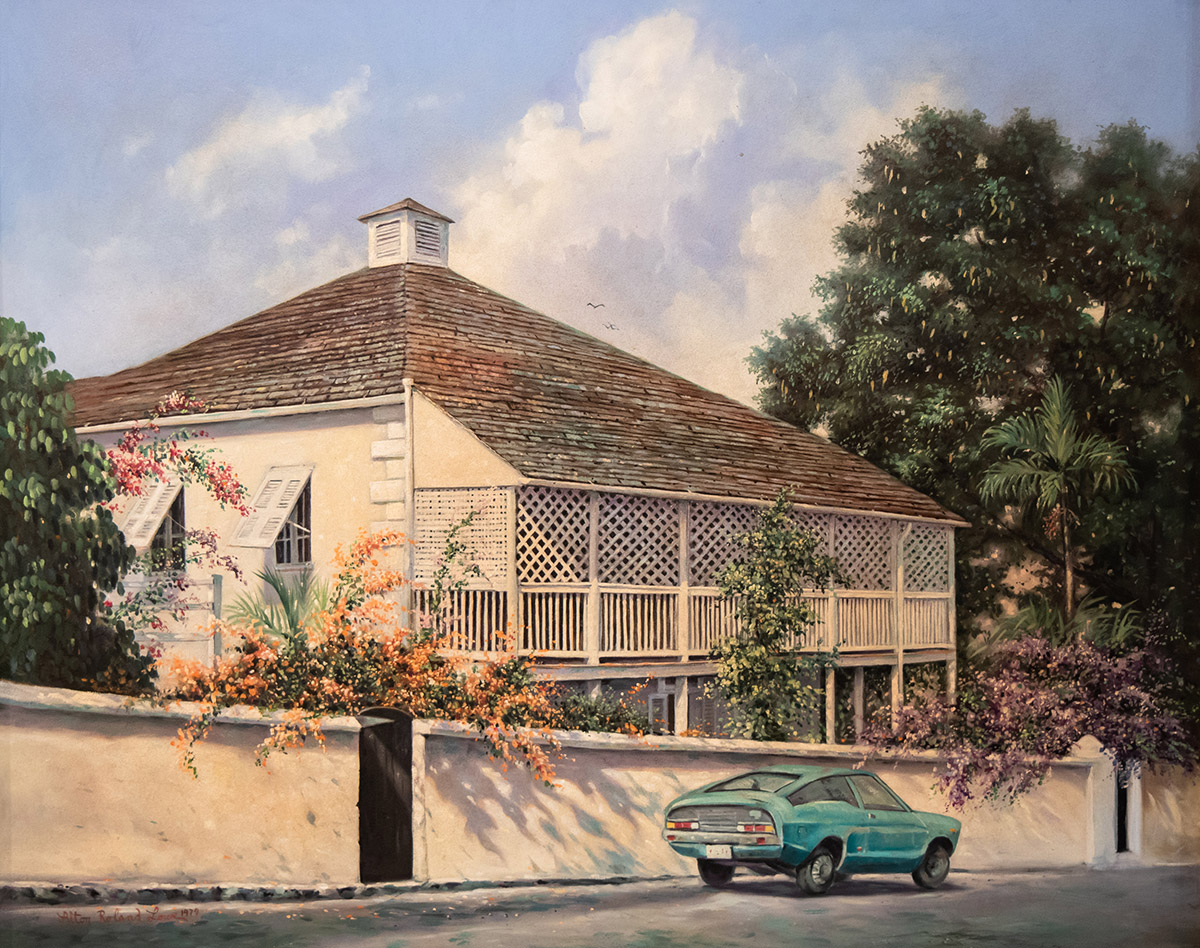From the Collection: “The Deanery” (1979) by Alton Lowe

By Natalie Willis
The work of Alton Lowe, a realist painter born in Green Turtle Cay, Abaco, has an easy appeal for many Bahamians. From landscapes and flora, architecture, to imaginings of Lucayans and Loyalists, his practice gives a sense of joy in his skill of rendering as much as his interest in history – and as a post-World War II baby, it makes sense, given the global conversations around how these events should never be repeated. His interests in preserving the past, that go far beyond his painting interpretations, inspired his founding of the Albert Lowe Museum in Green Turtle Cay, sharing the history and culture of the community he grew up in. He is also responsible for this Nassau-based blast-from-the-past with “The Deanery” painted in 1979.
Part of the new Permanent Exhibition, “TimeLines: 1950-2007” curated by NAGB Assistant Curator Richardo Barrett, “The Deanery” (1979) gives us a good opportunity to speak about just that – some of the threads and weavings and timelines that lead to the production of this work.
This particular piece was part of a larger gift of RBC FINCO to the National Collection upon the establishment of the National Art Gallery of the Bahamas. FINCO notably hosted art workshops for high-schoolers for years, which helped to nurture some of the more prominent artists in The Bahamas today. Through a series of commissions, the first giving interpretations and documentation of Nassau’s Historical Buildings in 1979, and the second with scenes from Grants Town in 1984. Alongside the likes of Rolfe Harris, Brent Malone, and Eddie Minnis, to name a few, Lowe was among the first commissioned by the bank to produce these scenes of Nassau, capturing and preserving old architecture through their own renderings and imaginings.
Though the Deanery is estimated to have been built around 1710, the three-story stone core building, with its latticed upper verandah, looks to be frozen in time in Lowe’s depiction save for one key detail – a Ford Pinto parked alongside the sidewalk on Cumberland Street. This time period is made all the more palpable in the works’ juxtaposition to the Sanford Sawyer photograph, a young man, afro aloft on a head held high, arms folded confidently behind his iconic “It’s Better In The Bahamas” shirt. The 1700s meets the 1970s, and ideas around preservation of history in reference to national pride and independence collapse into one work.
“The Deanery” (1979) by Alton Lowe displayed as part of the new Permanent Exhibition “TimeLines: 1950-2007” curated by Richardo Barrett.
It can be difficult dealing with these architectural relics of the past, considering how many buildings were constructed by way of forced labour extraction of Black hands and lives. The sentiments of “tear them all down!” and “history is history” run discordantly alongside each other. But remembering that our collective ancestors put their work into these buildings, by force or not, it may also be a disservice to not remember and honour the struggle in that work.
Works such as “The Deanery” (1979) give us both past and imagined-future Bahamas as a nation going through its reconfiguring post-independence. To know how we stand as an independent nation is also to consider how we deal with our difficult histories, how we recontextualise them when we have agency and power over the storytelling. Lowe’s work gives us a moment of pause to consider how far we have, or haven’t come, how we are dealing with our history and how we are sweeping it under itchy carpets to deal with in the proverbial “later”.
To view works like this and more in your National Collection, visit the NAGB to see “TimeLines: 1950-2007” which will be on view through June 2020.

“The Deanery” (1979), Alton Lowe, oil on masonite, 20 x 26 inches. Part of your National Collection.